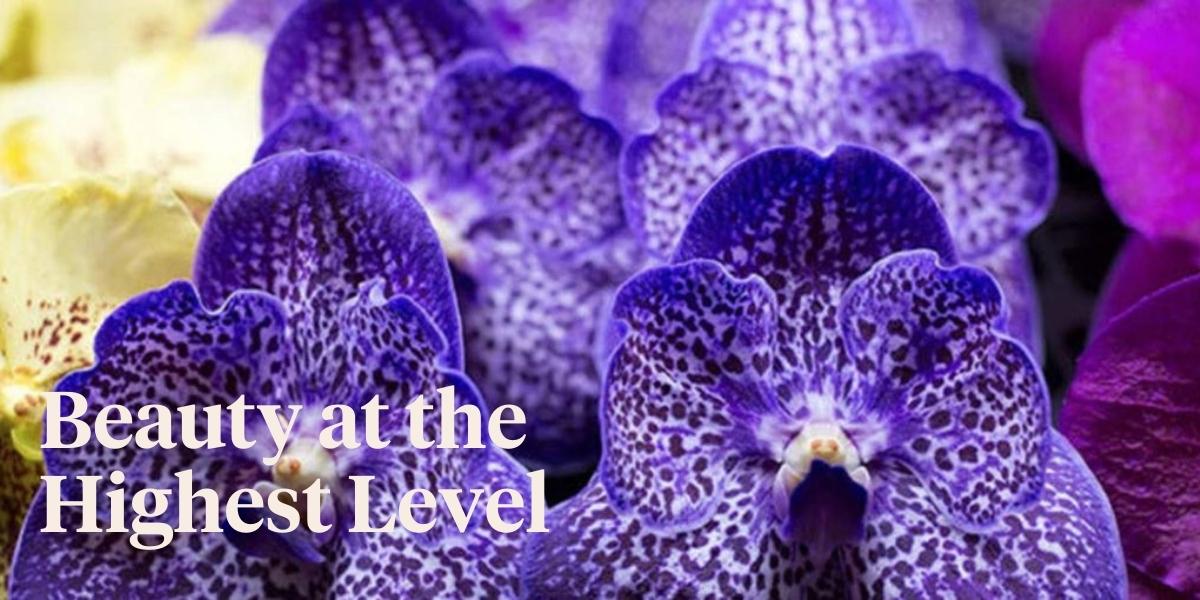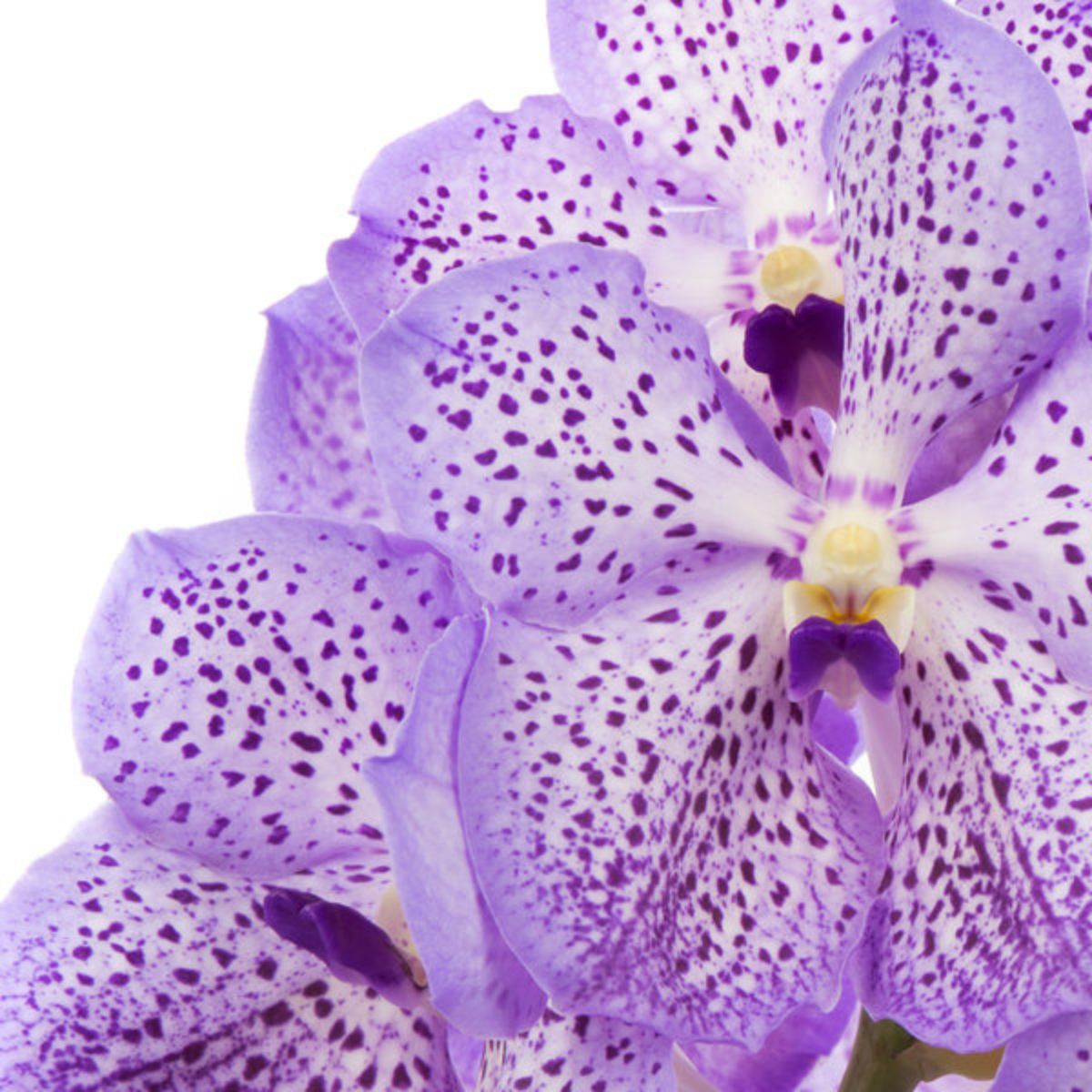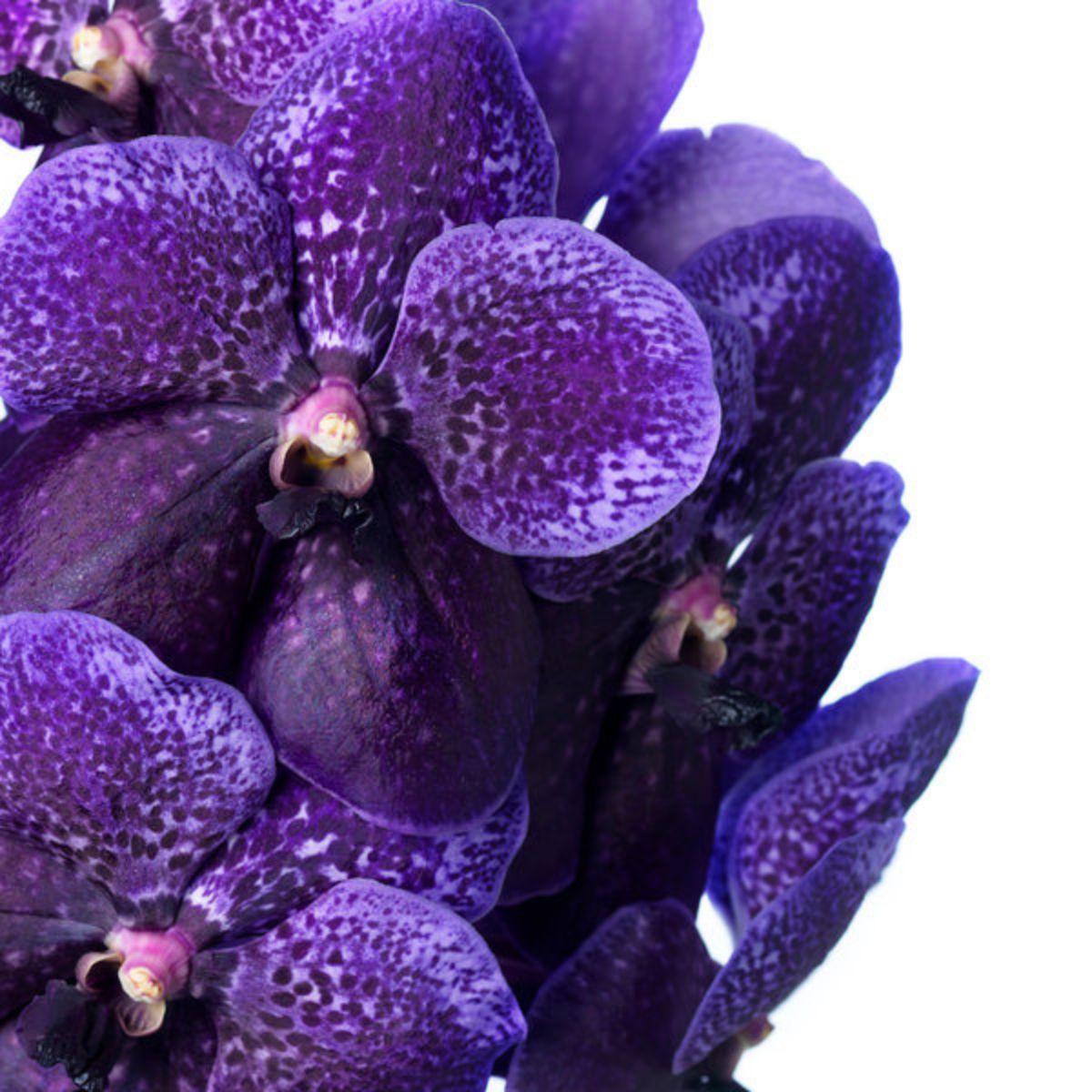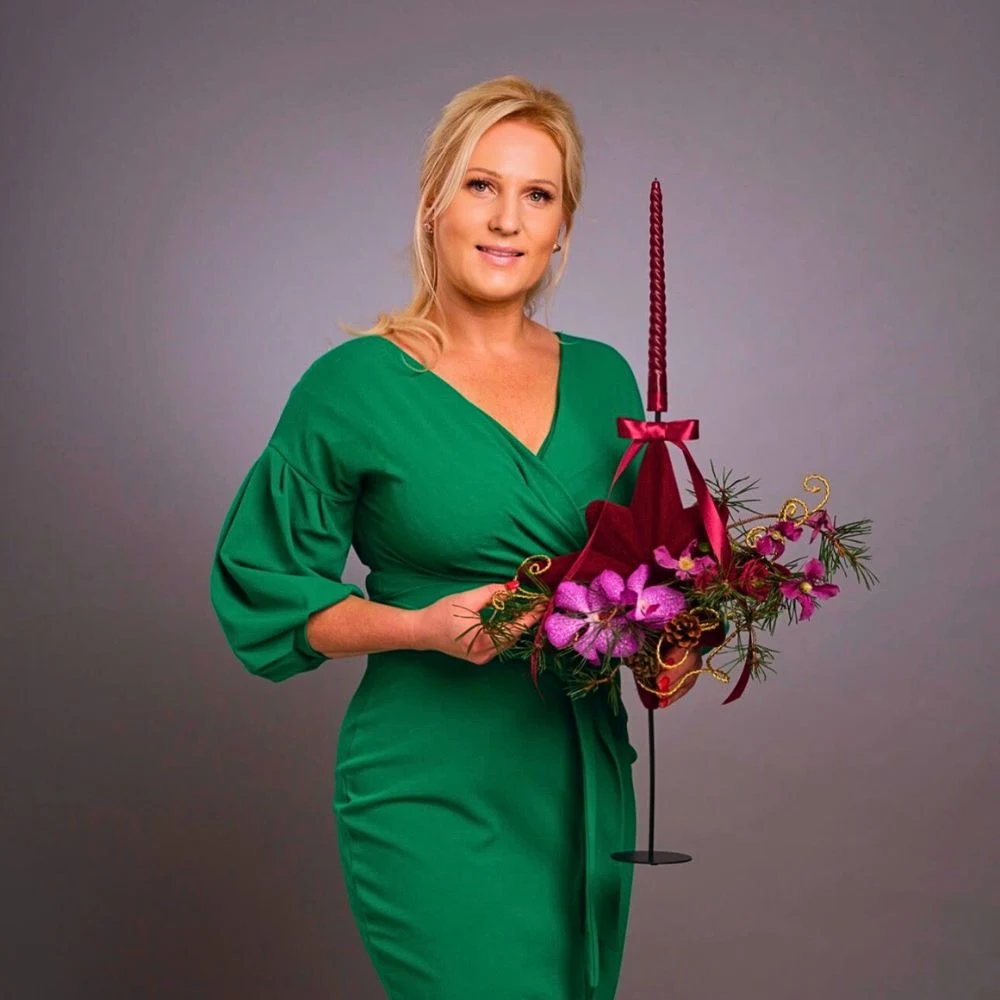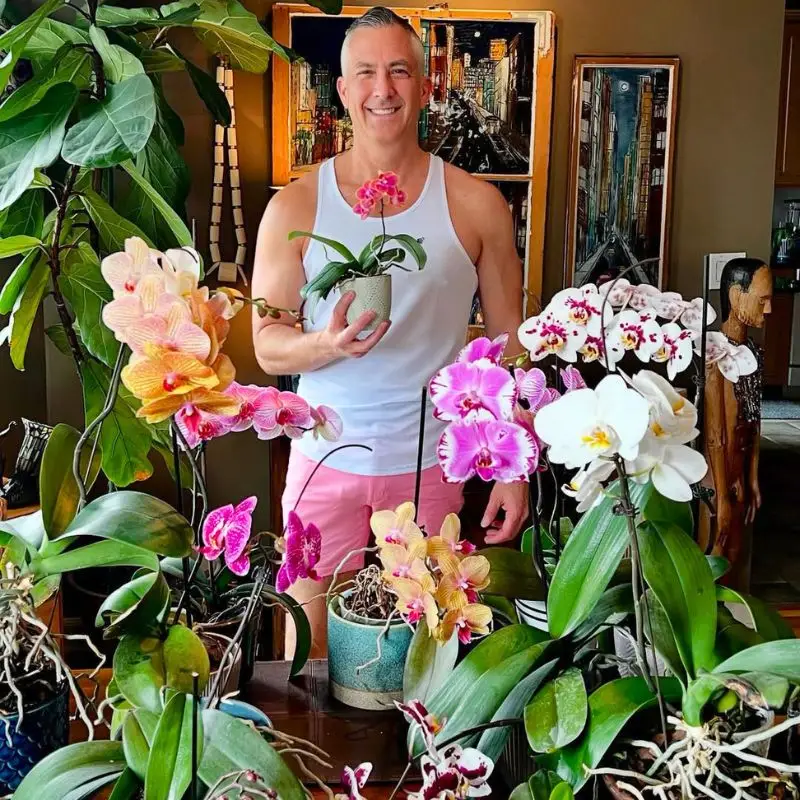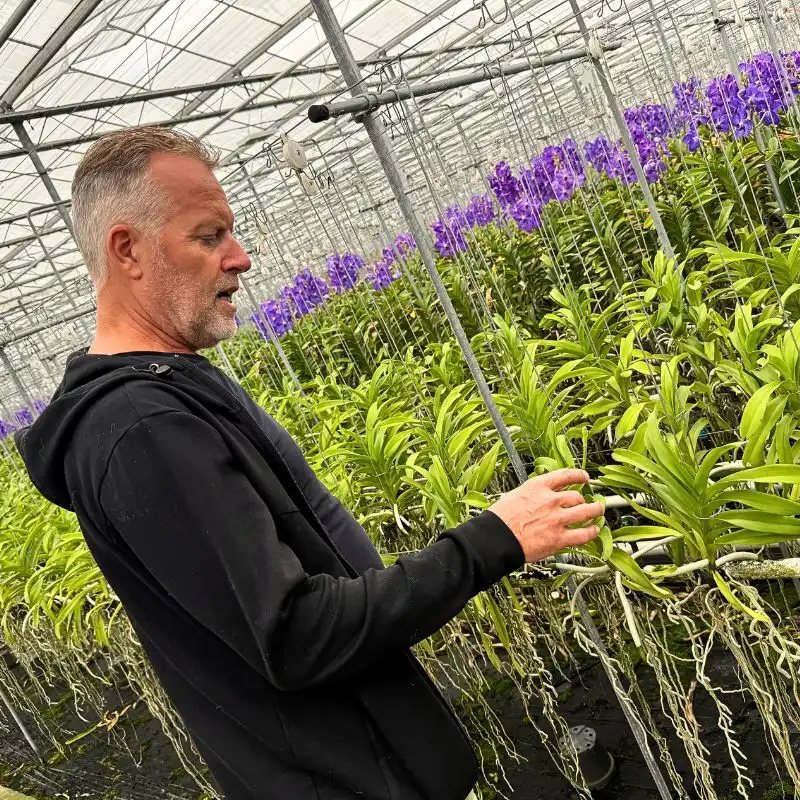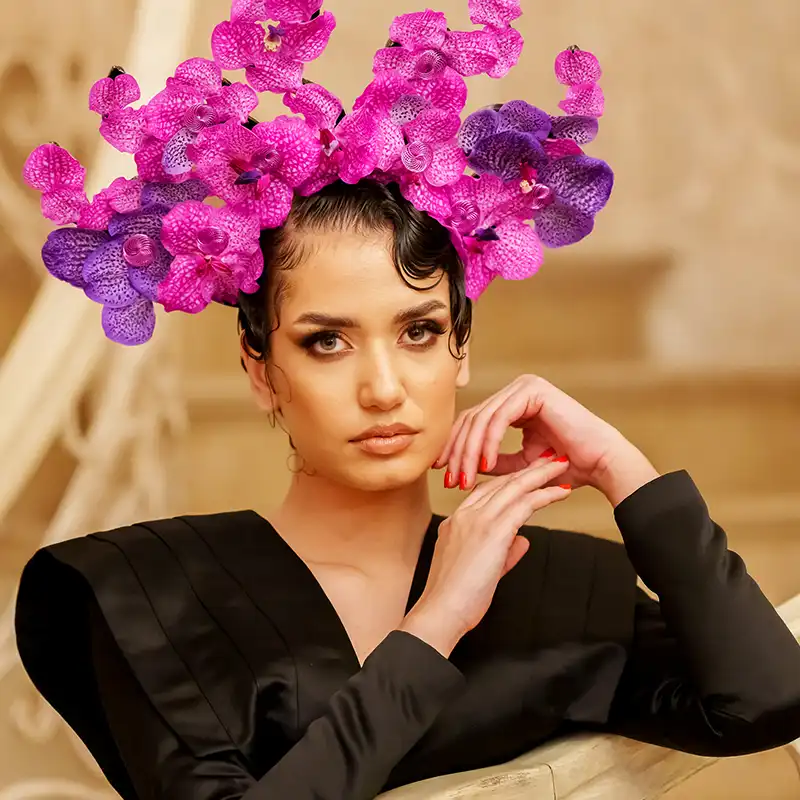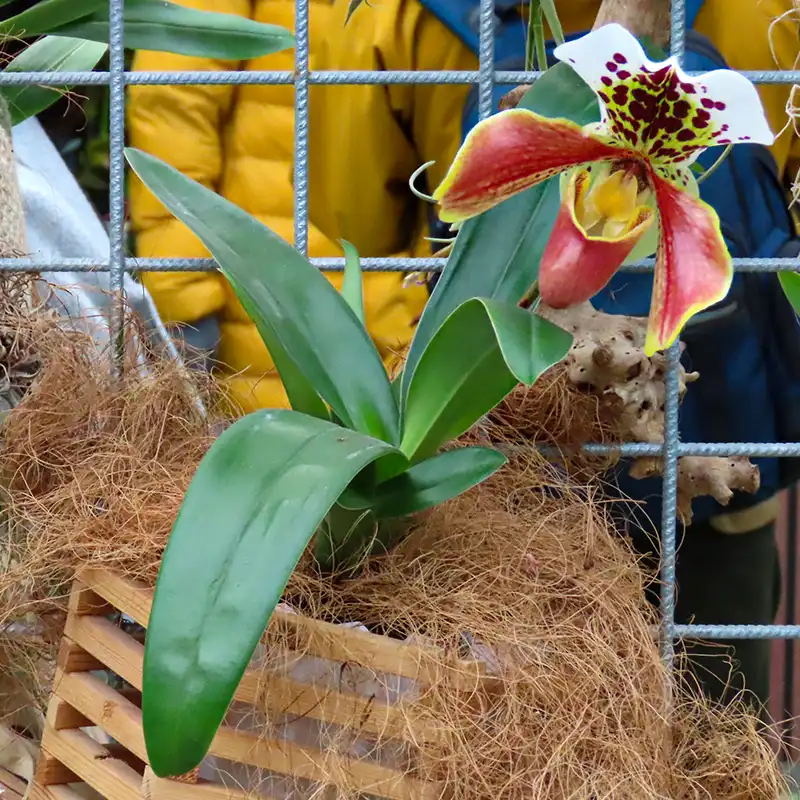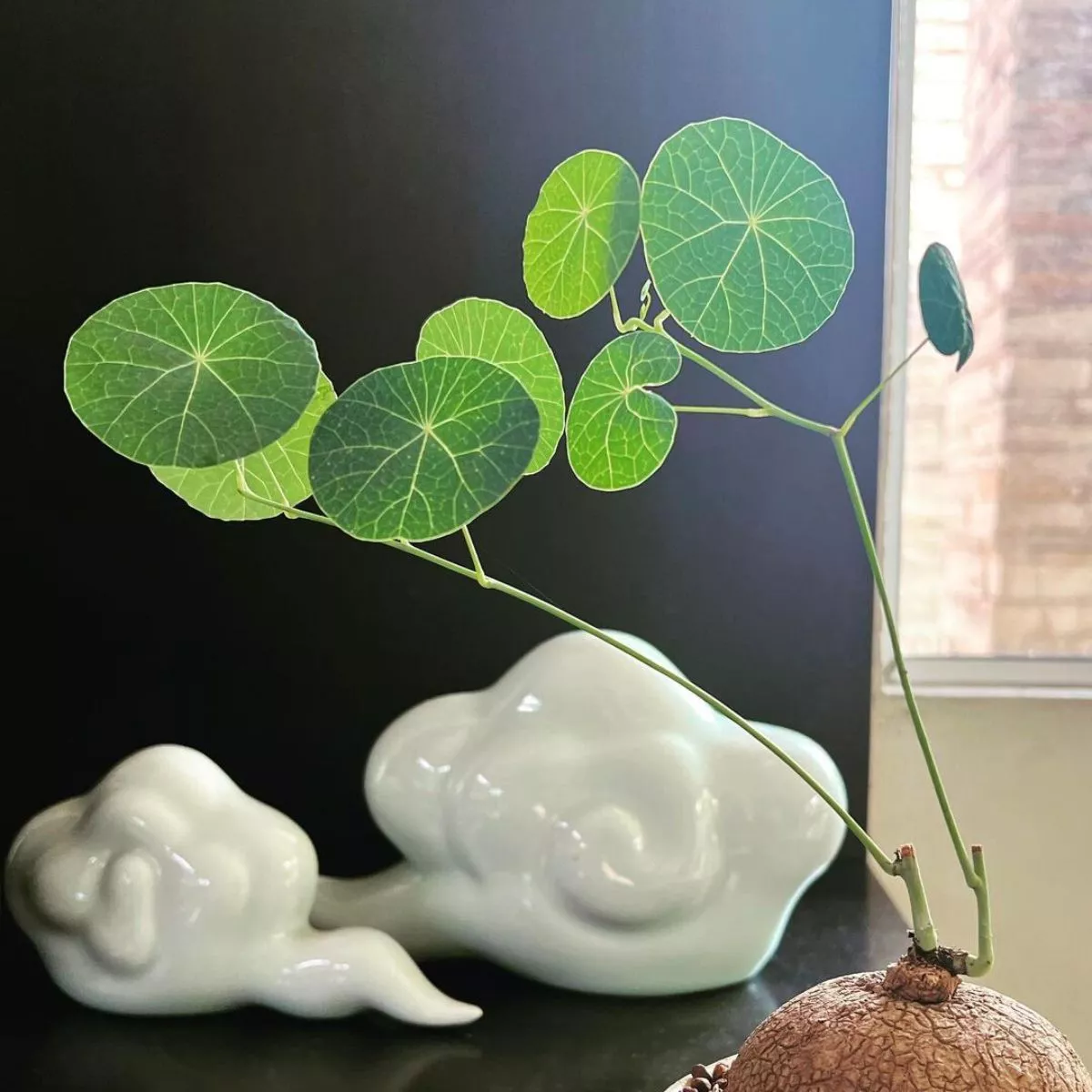The orchid's rank in the cut flower world is the same as that of the diamond and other precious stones in the jewelry business. So when choosing flowers for special occasions, such as weddings, anniversaries, and birthdays, there is nothing richer and finer than freshly cut Vanda orchids.
What Is a Vanda Orchid?
'Vanda' is an orchid genus in the Orchidaceae family. It is native to the tropical and subtropical regions of Asia and the Pacific. In their native habitat, vanda orchids can be found hanging from trees or from cracks in cliffs and other rocky locations. This type of flower is considered epiphytic, which means it does not require soil to flourish and actually grows in a variety of organic and inorganic materials.
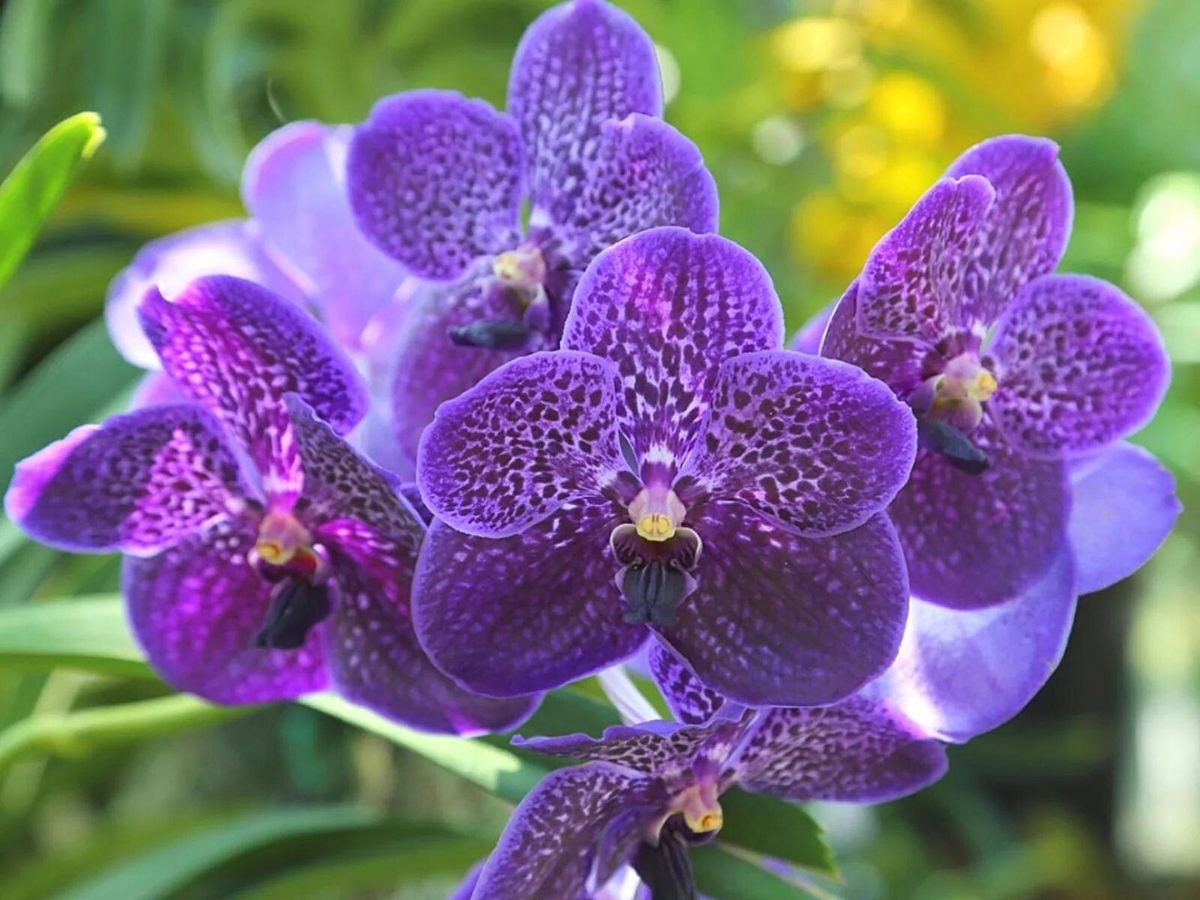
How does a vanda orchid grow, you may be wondering. Pay close attention, although the detailed part on how they grow will follow later. As a general idea, vanda orchids grow from bulbs that are thick and fleshy. They store moisture and the energy needed for the plant to grow. Its roots are aerial, they grow above ground and attach themselves for support to a variety of structures such as a trellis. These roots also gather moisture from the air. Now the next big question is: what is the appropriate vanda orchid care? You'll find all the details right below.
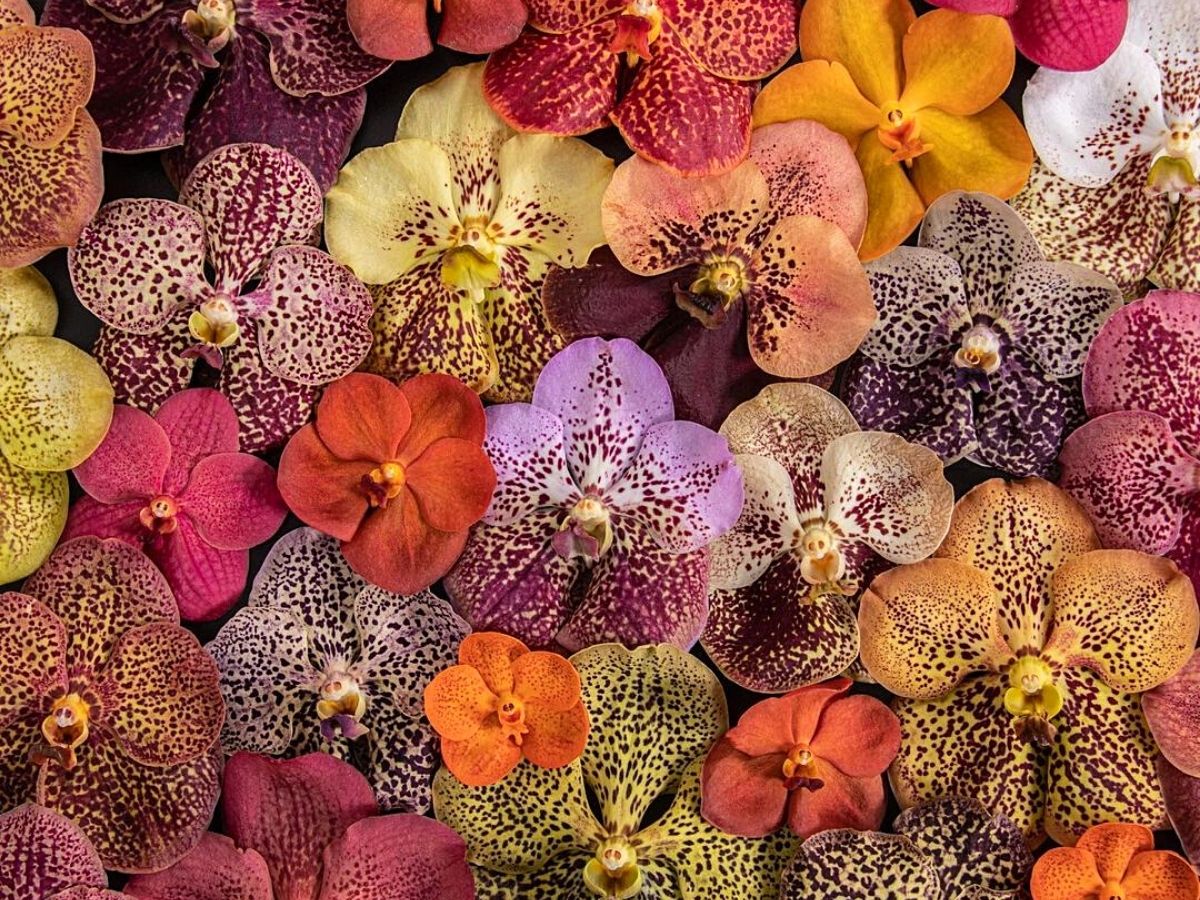
Oh, what an astounding appearance a flower can have! It's almost magical how much enchanting beauty can exist in that one spike. This is typical of vanda orchids, one of the most exclusive orchids in the world and you're about to get a whole lot of information from why these gorgeous flowers have become so popular nowadays even to learning to care for your vanda orchids. Let the orchid fun begin!
Vanda Orchid Care Handles
For beginners, vanda orchids are not the ideal plant to grow. Even among seasoned growers, a vanda orchid needs a few conditions that can be challenging to meet at home: high humidity, high temperatures, bright light, good ventilation, and intervals of sopping "rain" followed by a dry interval. These plants can readily reach lengths of 5 or 6 feet when their aerial root curtain is taken into account. Vandas are better suited for a greenhouse due to these factors, where they may thrive thanks to overhead irrigation and sunlight.
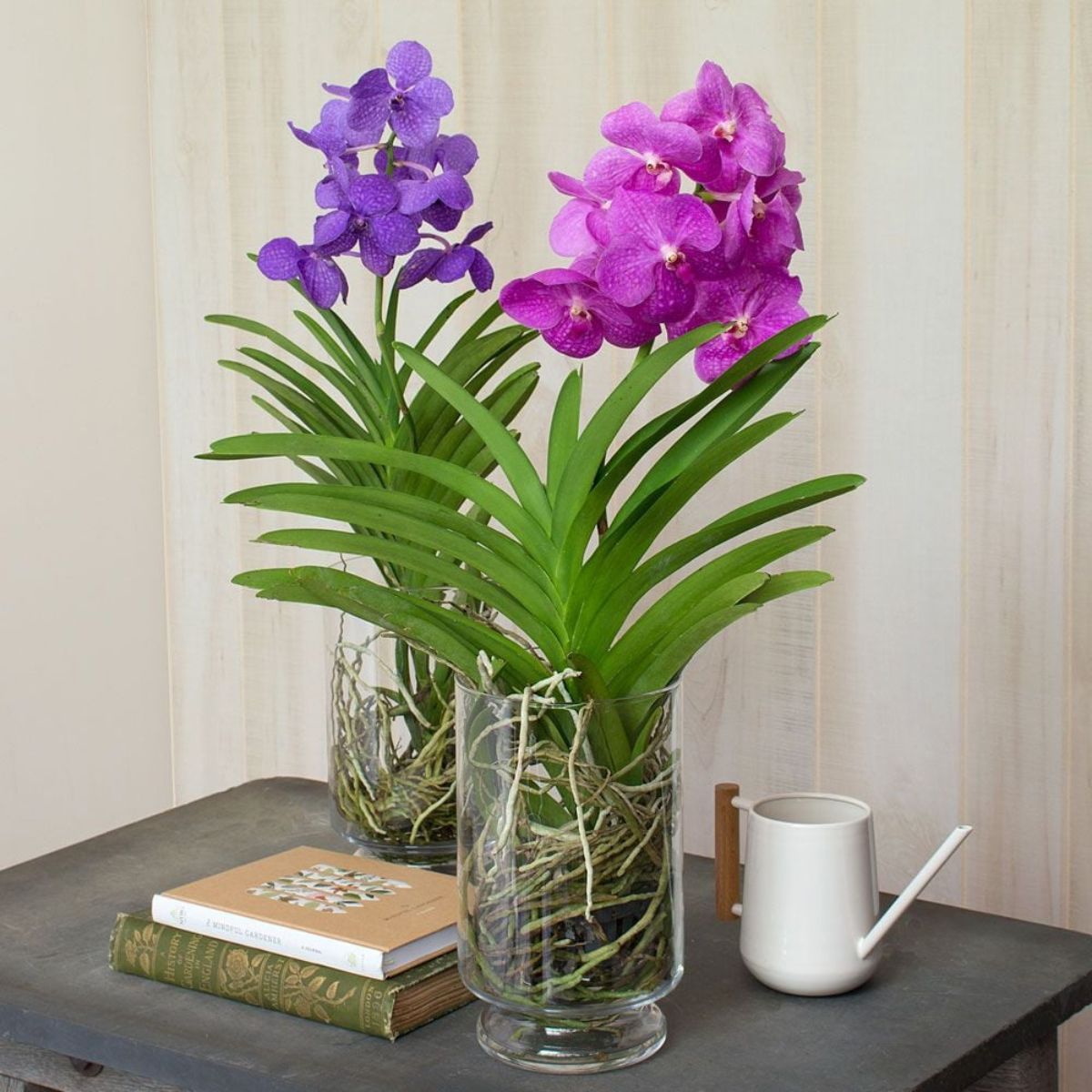
Vanda orchids are monopodial orchids, which means that they have a single stem from which their roots extend. As they ascend the stem in an alternate pattern, the leaves resemble a ladder. Older vandas tend to branch more often, and if uncut, the plants can develop into very big specimens. Vandas produce spikes that stick out between the leaves and emanate from the center stem. Here's how to care for and how to water vanda orchids.
Vandas need strong light, but they typically don't fare well in direct sunlight. They can adapt to full sun, although plants planted there are typically washed out and less robust than those grown under shade cloth to temper intense sunshine. Know what kind of vanda you have because some need more sunshine than others.
Vanda orchids need a lot of water to survive. They might need to be watered twice a day during hot seasons. During winter dormancy, water is approximately once per week. Throughout the growing season, keep the medium in the container constantly moist but not waterlogged.
The native habitat of these orchids is a rocky terrain with little soil. Their sprawling roots grab onto neighboring trees and other objects as they meander through the air. Plants that are grown in ordinary potting soil risk dying. Instead, choose a basket that gives the roots plenty of room to breathe. Add bark, peat moss, or another soilless substance to the basket to help anchor the plant. A potting material designed specifically for orchids is another option. The roots will eventually cling to the basket to support the plant erect.
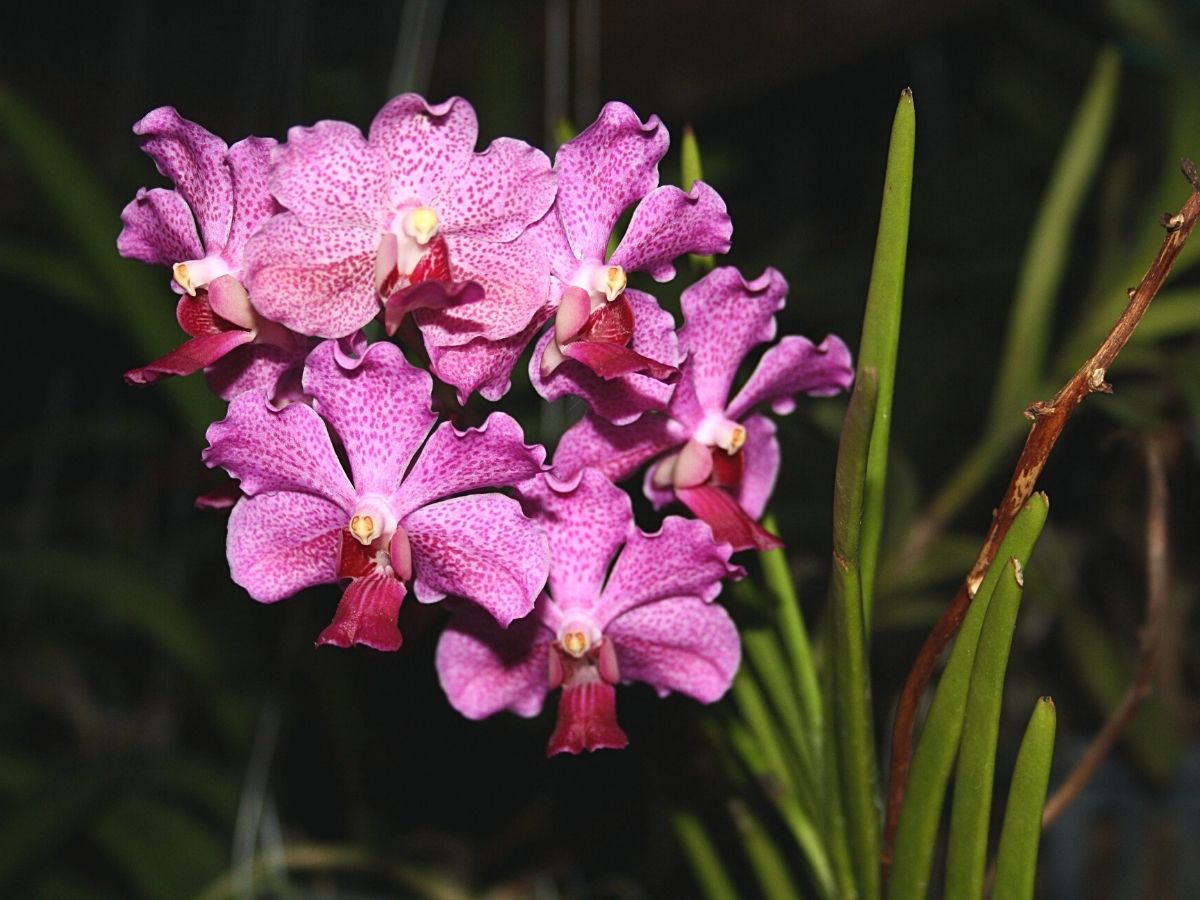
Semi-terete is a hybrid of the other two and has a leaf shape that takes on the characteristics of the others. Each variety requires heat and high lighting conditions. Ideal growing conditions include warm and humid locations. The warmer the temperature, the quicker the plant will grow. Now it's time to explore the different types of vanda orchids you can buy to have at home.
8 Types of Vanda Orchids You Should Know About
There are three varieties of vanda orchids in which they are classified (the varieties are very different than the types of vanda orchids you can find around the world). The three main varieties of vanda orchids are strap-leaved, terete, and semi-terete. Each variety has different lighting requirements. The strap-leaved has broad, flat leaves, while the terete variety has rounded, pencil-shaped leaves. Now let's get to the fun part of meeting some of the most beautiful types of vanda orchids.
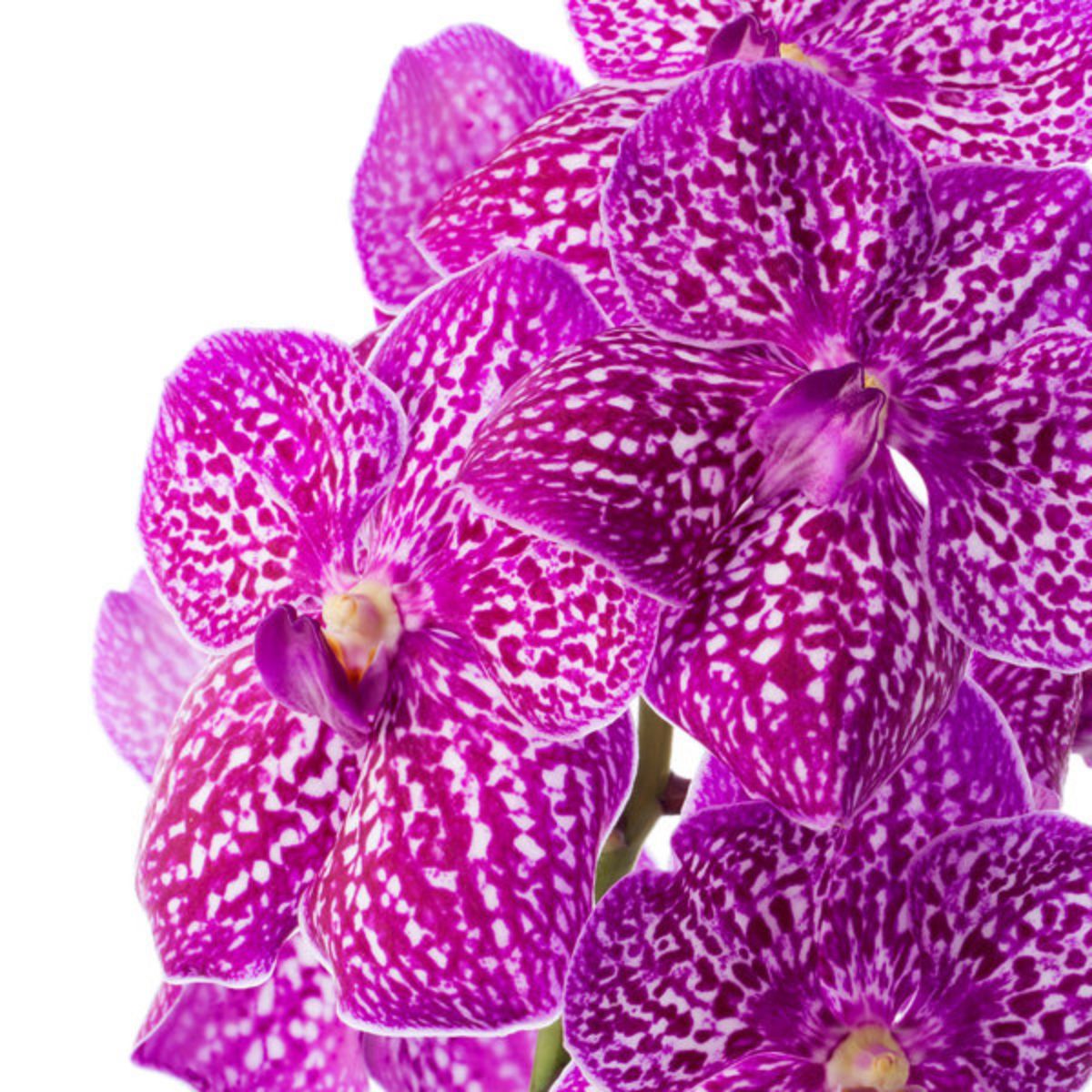
Vanda Orchid Kanchana Magic Blue
One of the rarest varieties in Ansu Vanda's collection is the Vanda Kanchana Magic Blue Orchid. This vanda orchid has the most colors of all orchid species, including blue - a color not often seen in the flower world. Though softly influenced with red, giving this variety a purple sheen, the cool but magical blue hues of this vanda add something truly special to any floral arrangement or bouquet.
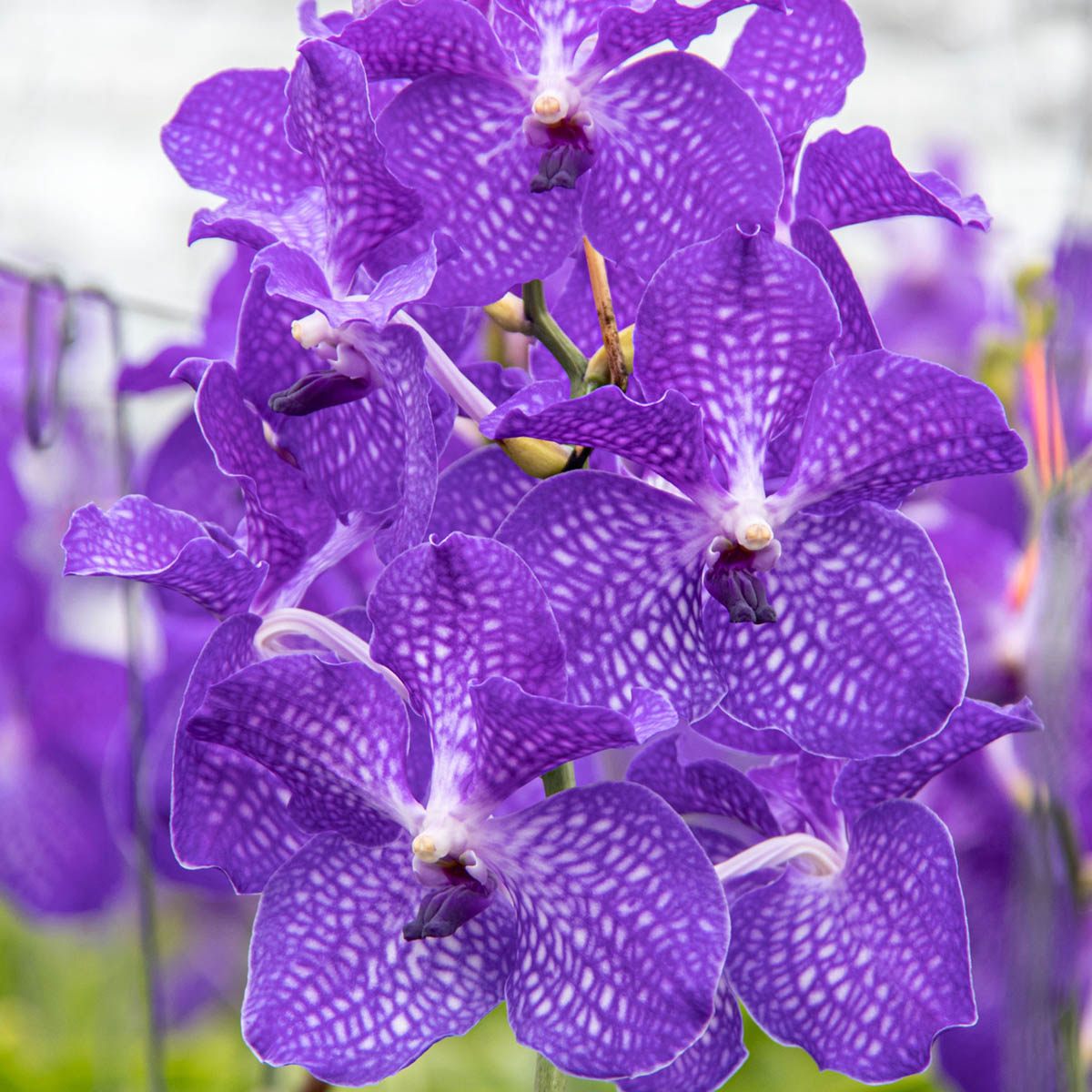
Vanda Sanderiana Orchid
On the slopes of dipterocarp trees, the Vanda Sanderiana orchid, also known as the 'waling-waling orchid' grows naturally in particular areas of the Philippines. They grow in a white type as well but are most frequently found in a pink form with intense scarlet-colored speckles on the flower petals.
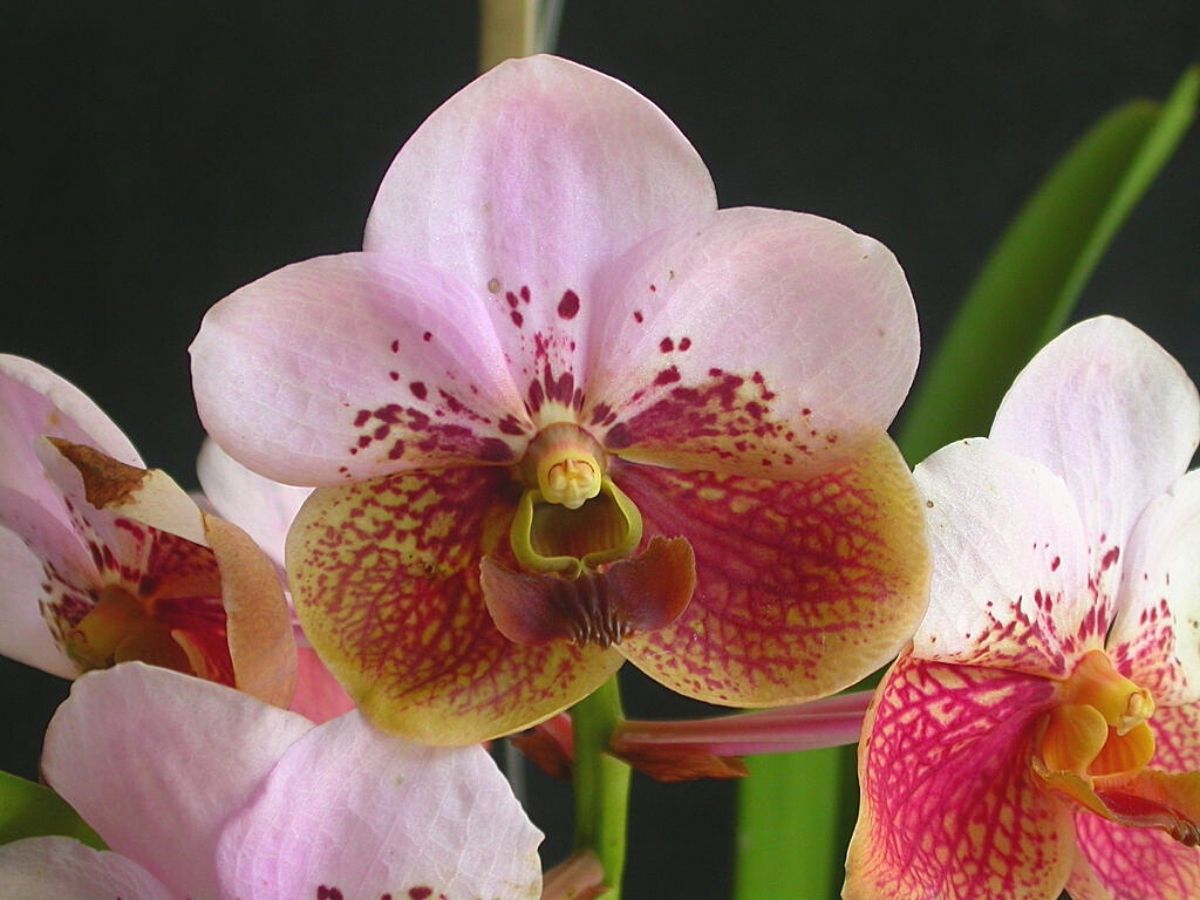
The waling-waling orchid is frequently grown in horticulture but is extremely uncommon in nature due to overharvesting. To increase awareness, the Philippine government even made an effort to have it recognized as a second national flower in the early 2000s.
Vanda Bensonii Orchid
Also known as 'Benson's Vanda', in Assam, India, Thailand, and Myanmar, this type of vanda orchid is a natural plant. It has roughly 2-inch-diameter fragrant five-petaled flowers that are aromatic. They feature five yellow petals with heavy reddish-brown speckles surrounding their white and light-purple cores, making them a rare type of vanda orchid as well. Each inflorescence contains about 20 fragrant flowers when it is in bloom (typically in the spring).
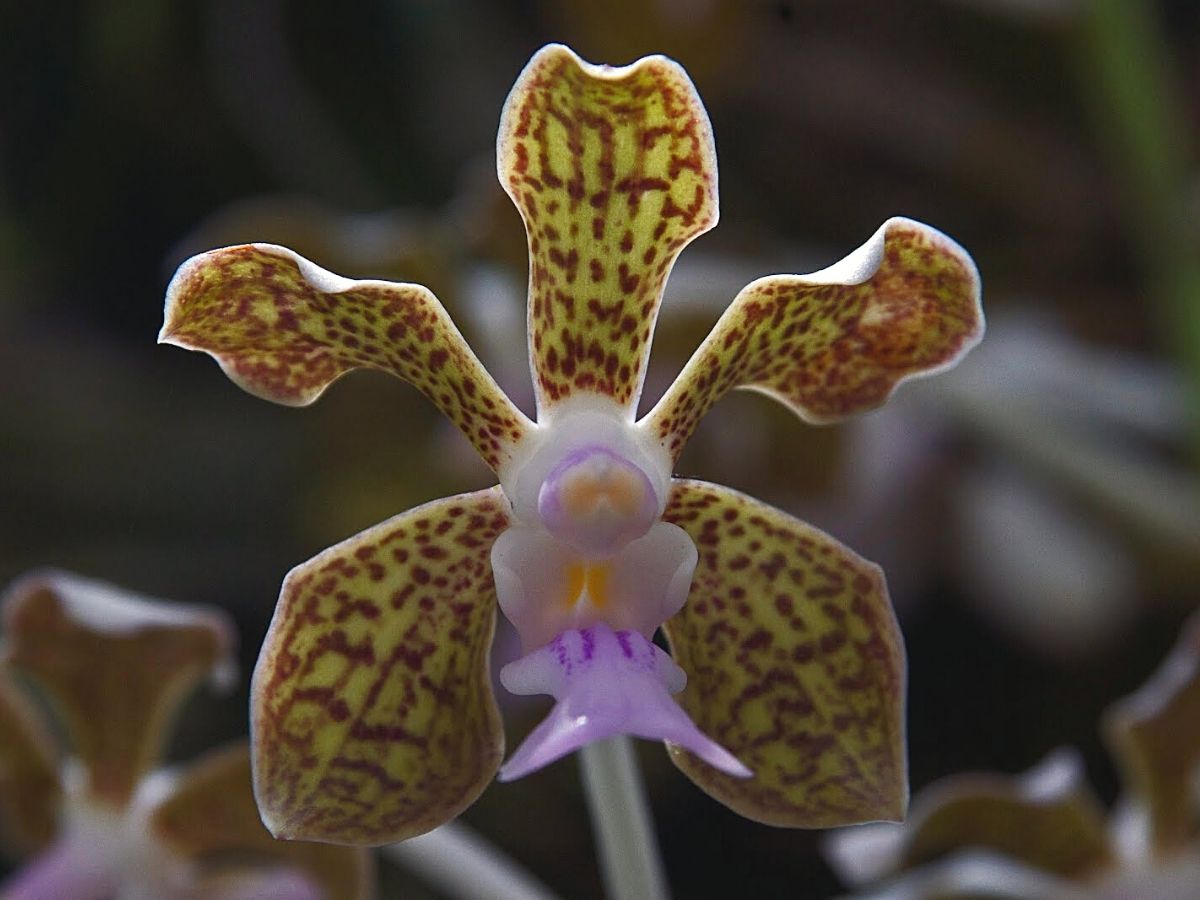
Vanda Kanchana Ansu No. 1 Orchid
Not surprisingly, the Vanda Kanchana Ansu No. 1 Orchid is the 'Chanel No. 5' among vanda orchids. This beauty is one of the most popular and charming white vanda orchids, plus is long-lasting and has a year-round availability. Perfect for classic wedding themes, or really any arrangement that can use a flower as white as white can be.
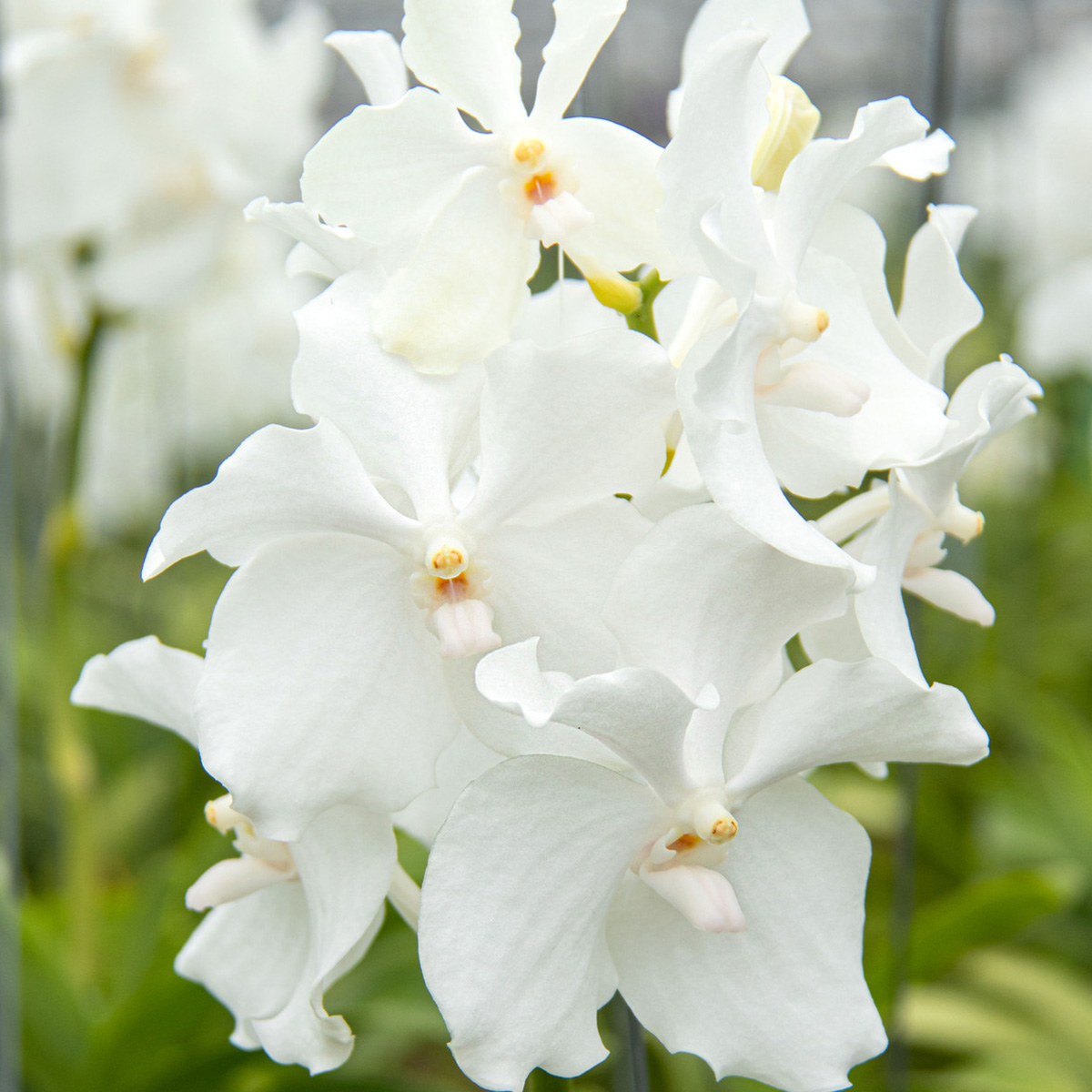
Vanda Sunanda Chocolate Brown Orchid
Brown or coffee-colored flowers are completely trending right now. Their popularity has skyrocketed over the last few years, and rightfully so. The Vanda Sunanda Chocolate Brown Orchid is a rare type of orchid because of the number of spots it has and is perfect for incorporating into earthy color schemes. The subtle but impressive colors of this vanda orchid make it a rich flower that adds texture and interest to floral designs, whether you build voluminous pieces or keep it spare and simple.
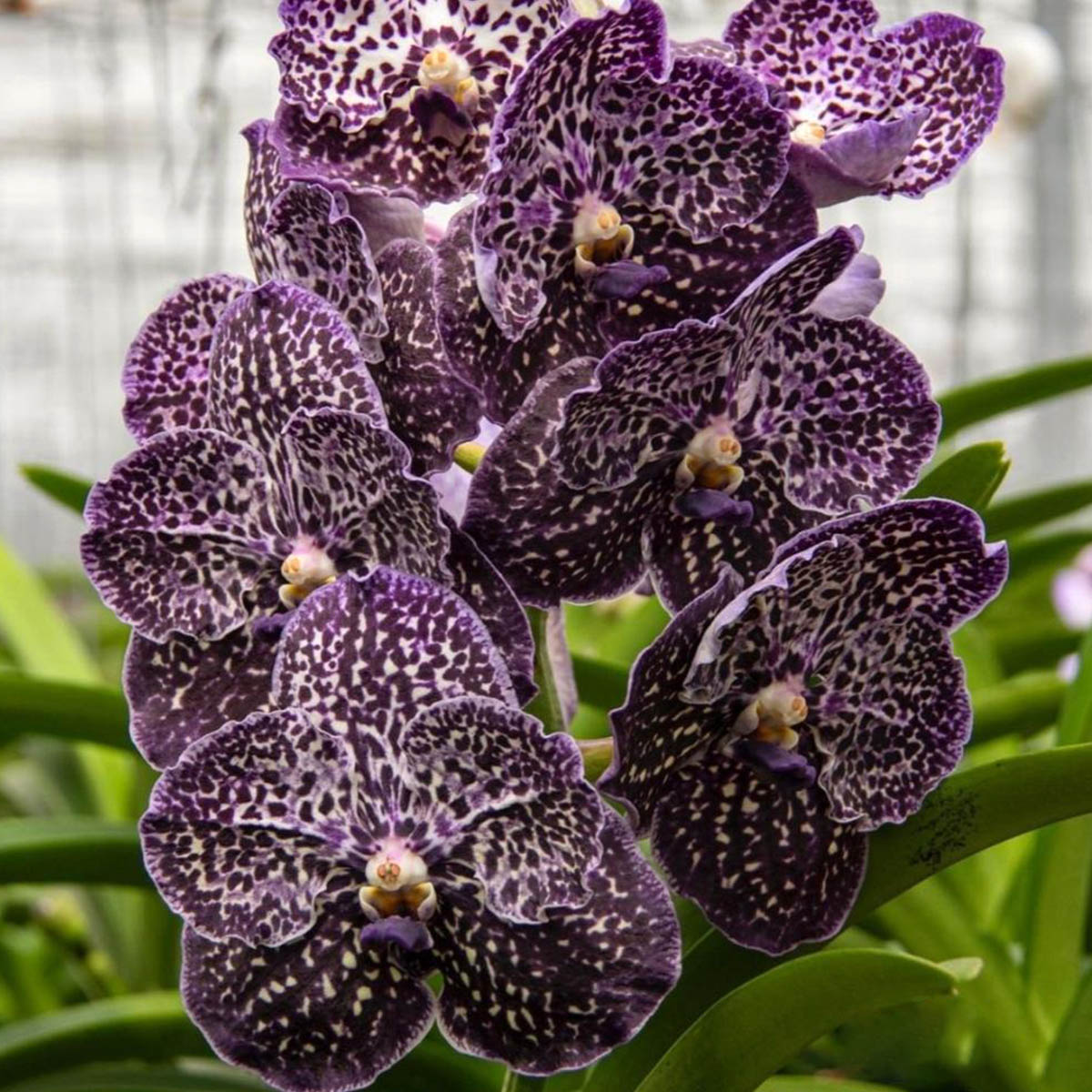
Vanda Tricolor Orchid
A breathtakingly beautiful variation of vanda orchids is the vanda tricolor. They produce dense, rich, cascading foliage that resembles the erect, strong fronds of a palm tree. The plant finally develops racemes that resemble sticks from which lovely blooms with 2 to 3-inch diameters emerge. The flowers have a bright pink center and are white in hue with rust-red dots.
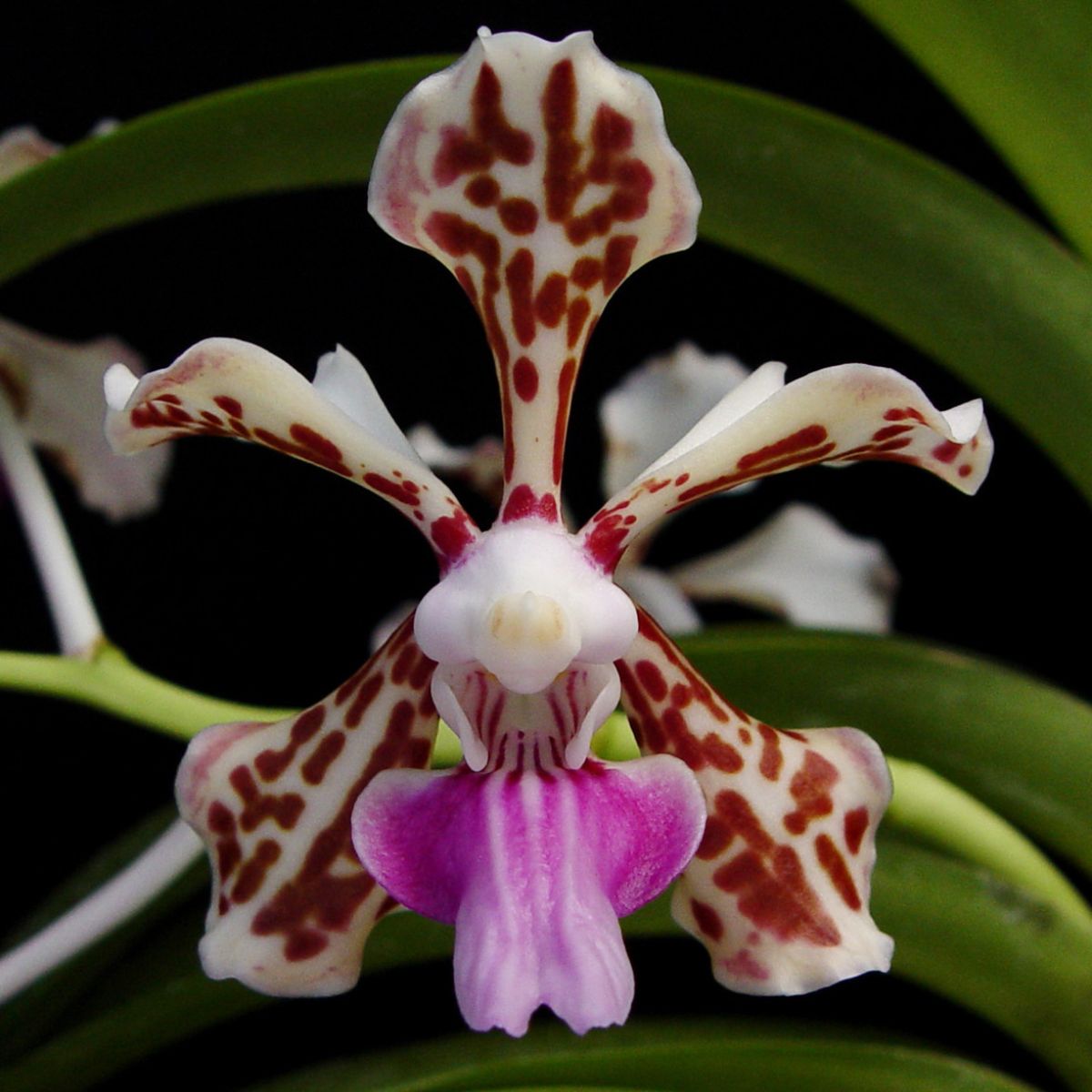
In comparison to other orchids, this one grows considerably more slowly. They might take years to bloom after being grown from seeds. The long wait, however, is worth it for the stunning Vanda Tricolor orchid blooms and their unusually seductive fragrance, which has a grape-flavored candy-like aroma.
Vanda Sunanda Jeff Leatham Orchid
The Vanda Sunanda Jeff Leatham Orchid is a purple vanda orchid beauty of the highest rank. With only a few stems of this spectacular flower, you are ready to impress. This variety is named after the famous floral designer Jeff Leatham, on the occasion of his marriage to Colton Haynes. A stunning purple vanda packed with love.

Vanda Divana Sea Shell Orchid
As the name implies, the Vanda Divana Sea Shell Orchid gives off those pure, relaxing, beachy vibes. An interesting mix of the lightest shade of lavender that gradually fades into soft yellow, interspersed with lovely burgundy spotting. Just imagine the abundance of options for tropical arrangements you can create with this flower!
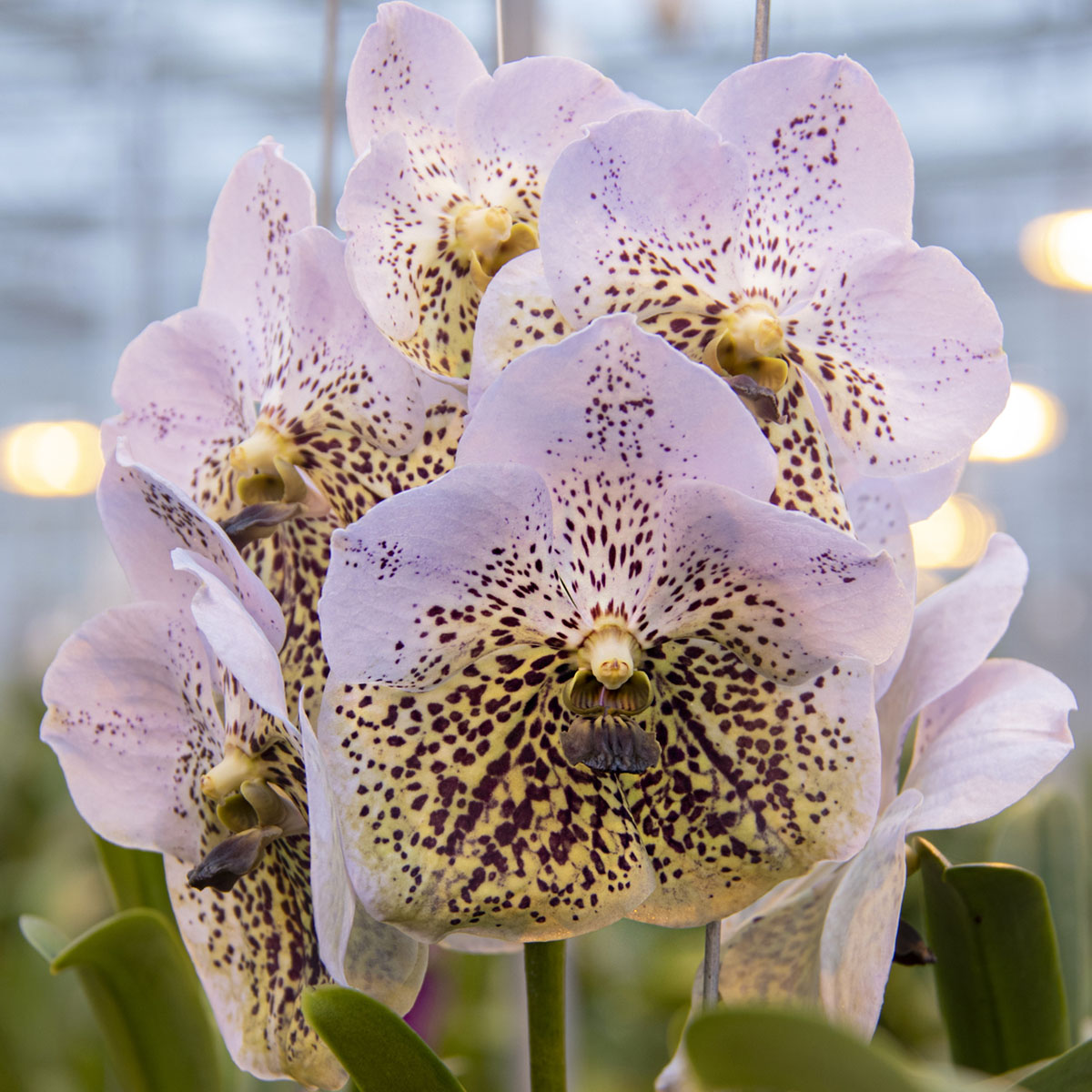
Designing With Vanda Orchids
Over the last three decades, the vanda orchid has become a symbol of exclusivity in the floriculture sector. Orchids have become a primary selection for decorating important events or giving five-star hotel lobbies and living rooms extra allure. With their intense coloring and unusual growth habit, vanda orchids cause the hearts of flower lovers around the world to beat faster.
Are you ready to start designing with vanda orchids? Remember, they'll help you see and feel beauty at its highest level. Read more about Ansu Vanda here.

